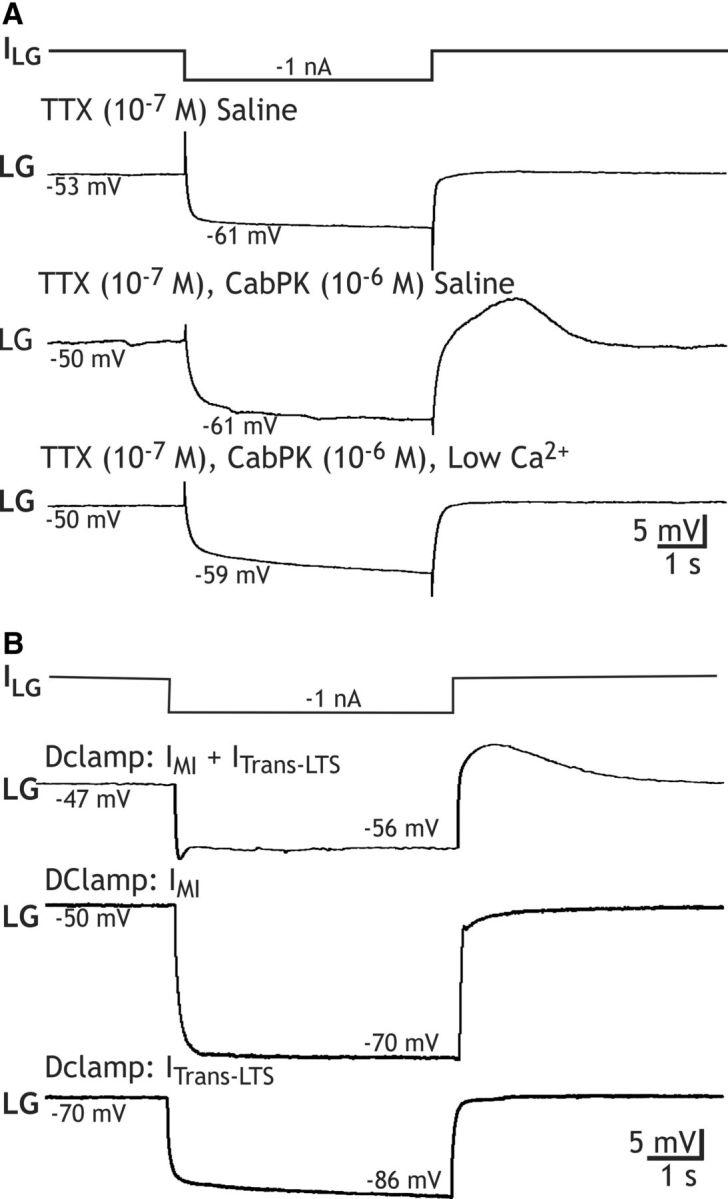Figure 7.

PIR in the LG neuron persists in the presence of TTX during either CabPK application or dynamic-clamp coinjection of artificial IM plus ITrans-LTS. A, Top, In the presence of TTX saline, a 5 s hyperpolarization in the LG neuron from a depolarized baseline was followed by a direct return to the depolarized baseline. Middle, During CabPK superfusion in TTX saline, a comparable 5 s hyperpolarization in LG was followed by PIR, albeit without action potentials. Here, the depolarized baseline resulted from the influence of CabPK. Bottom, CabPK superfusion in TTX saline containing 0.1× normal Ca2+, substituted with equimolar Mn2+, did not enable PIR after the same hyperpolarizing step as above. All recordings were from the same LG neuron. B, Top, Dynamic clamp injection of artificial IMI (gMI, 80 nS) plus ITrans-LTS (gTrans-LTS, 100 nS) in TTX saline enabled PIR in the LG neuron after a hyperpolarizing step. The initial dip in the LG neuron membrane potential occurred in all (n = 4) of these responses to hyperpolarizing current injection during the dynamic-clamp coinjections but not during the individual injections (e.g., see below). Middle, bottom, In contrast, separate dynamic-clamp injection of IMI (middle) or ITrans-LTS (bottom) in TTX saline did not enable PIR in the LG neuron. Note that, in the bottom recording without artificial IMI, the LG neuron resting potential is not depolarized.
